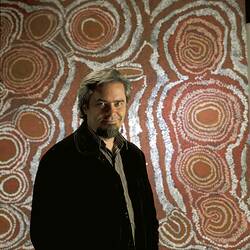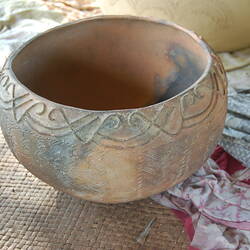Ethnohistory
The Ethnohistory Collection represents the cultural histories of Indigenous people across the world spanning the past 150 years. It is a visual and written history which embodies a vast knowledge base generated through various and diverse ranges of experiences and exchanges, mostly by non-Indigenous people using a range of media. It captures changing representations of Indigenous people through the filter of anthropologists, archaeologists, historians, amateur and professional collectors, photographers, film-makers, missionaries, government appointees, philanthropists and even tourists. The collection encompasses contact history, the impact of colonisation, representations of Indigenous people, mission history and the history of anthropology and photography.
Significance
The Ethnohistory Collection has its beginnings in the nineteenth century, although it was not until 1992 that it became a formal collection. It is a significant storehouse of Indigenous knowledge, particularly for Victoria but also for other areas of Australia. It also provides a valuable overview of the way in which Indigenous people have been represented through time. Another specific strength is the interconnectedness of all these individuals and elements within specific components - across collectors, across time and across place. All this material is a crucial reference point for Indigenous people, as it has family history information and community histories embedded within the archive, and has been shown to be an invaluable resource for community-based projects, native title claims and so on.

